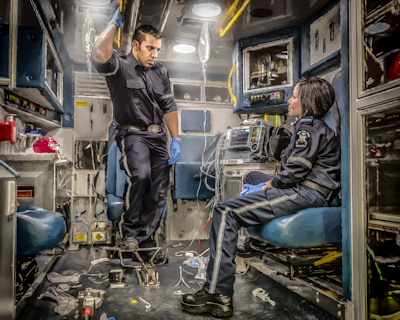Emergency Medical Technicians (EMTs) Save Lives!
Being a part of an EMS Team provides you with
- Sense of pride
- Opportunity to help your community
- Sense of accomplishment
- Extensive emergency response training
- Opportunity to advance in the EMS and health care profession
- An EMS family of nearly 65,000 providers in New York State
Who Serves?
Emergency Medical Technicians (EMTs), Paramedics, Physicians and EMS Officers all work within an Emergency Medical Services System. An EMS Agency can be made up of all volunteers, combined departments with volunteers and career staff or, a fully career department.
Emergency Medical Technician (EMT)
EMTs conduct basic, non-invasive interventions to help save lives and reduce harm at emergency sites. They have the skills needed to transport patients safely. In many places, EMTs provide out-of-hospital care. To be licensed as an EMT, you must take an accredited course. EMTs courses are normally between 150 and 180 hours to complete.
EMTs learn how to:
- Perform Cardiopulmonary resuscitation (CPR)
- Administer oxygen
- Administer glucose to diabetic patients
- Help people who are having asthma attacks or allergic reactions
- Remove patients and prepare them for transport to hospital
Learn more about EMS course availability
Paramedic
Paramedics are the most skilled emergency responders. To become a certified paramedic, you must successful complete a nationally accredited paramedic program at the certificate or associate's degree level.
Paramedic classes take longer, between 1,200 and 1,800 hours to complete. Often, they are offered at a college and allow a student to obtain an Associate's degree, if they choose.
Paramedics learn how to:
- Administer medications
- Start intravenous (IV) lines
- Provide advanced airway management for patients
- Resuscitate patients
- Help people who have suffered trauma
